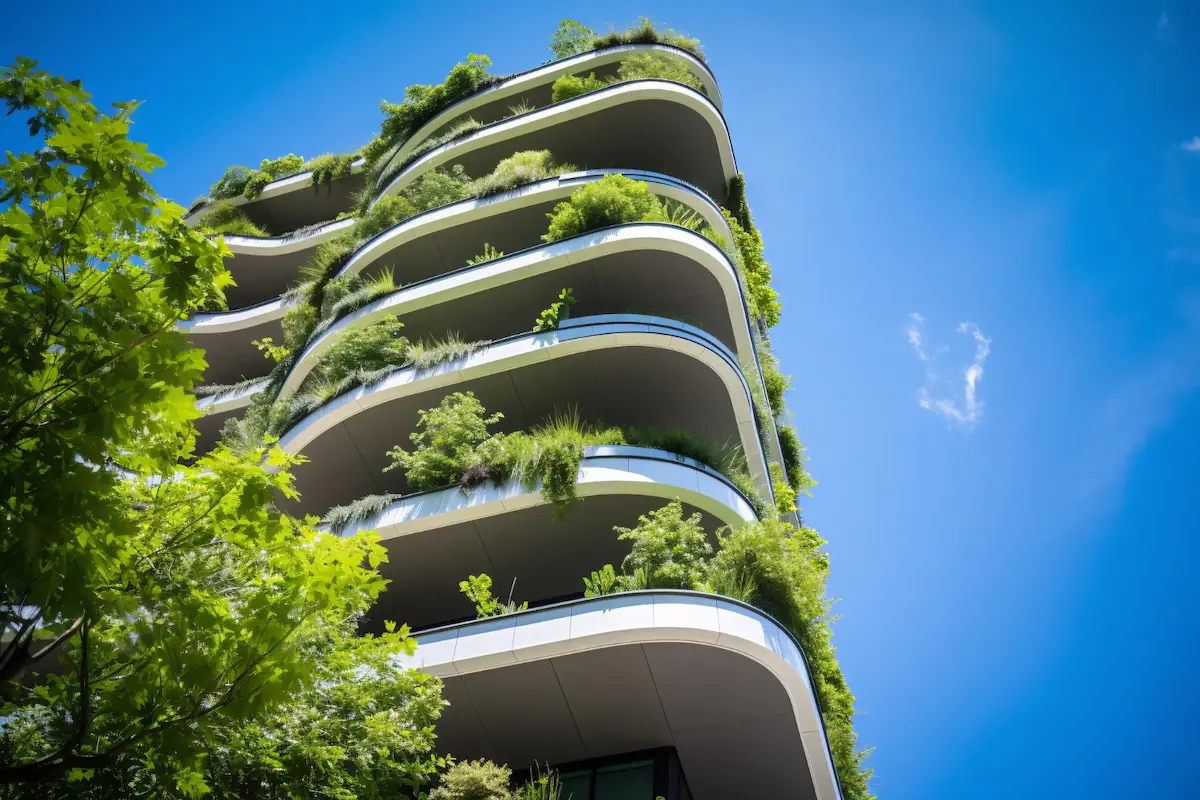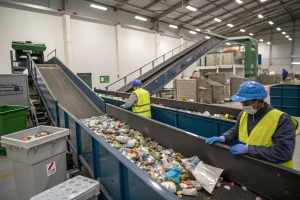Table of Contents
Construction activities often contribute to environmental damage, especially those that use non-eco-friendly designs and materials. Therefore, a solution has emerged in the construction world called the green building concept.
To understand the green building concept in depth, including its characteristics, functions, benefits, and examples of its application, read the explanation in this article until the end!
What Is a Green Building?

A green building is a structure designed with a focus on the efficient use of natural resources and the utilization of renewable energy. Therefore, the construction, design, and operation aspects must be thoroughly considered to minimize negative impacts on the environment.
As this concept has evolved, there are also efforts to create a positive impact on the environment, such as the use of natural light and the installation of solar panels.
According to the SPEKTRUM Journal, the green building concept can be implemented by utilizing local knowledge, renewable materials, energy conservation, appropriate land use, water conservation, air quality, and adequate environmental management.
Characteristics of Green Building

Below are some characteristics of green buildings that differentiate them from conventional buildings:
- Using eco-friendly materials and conserving resources.
- Reducing water usage during the construction process.
- Utilizing renewable energy and striving for energy efficiency to reduce pollution.
- Using public transport for logistics needs, rather than personal vehicles.
- Maximizing natural lighting from sunlight.
- Optimizing construction waste management.
- Protecting natural habitats and accommodating direct interaction with nature.
- Optimizing room quality for users, including air quality, temperature regulation, and reducing noise pollution.
Read also: Simple Ways to Improve Air Quality
Function of Green Building

The application of the green building concept is to carry out the following functions:
1. Facilitate Reducing Negative Impact on the Environment
Traditional construction practices like vegetation clearing contribute to environmental degradation. Therefore, green building comes with more environmentally friendly practices, such as the creation of Green Open Space (RTH), the selection of non-toxic materials, and the management of waste disposal systems.
2. Energy Conservation
The green building concept prioritizes the conservation of natural resources, including water, energy, and building materials. By doing so, construction waste production can be minimized, and air pollution can be prevented.
Furthermore, the availability and balance of natural resources for future generations will not be disrupted.
3. Supporting Aspects of Aesthetics and Economy of Buildings
In general, green buildings have unique, attractive, and innovative designs. This makes them aesthetically pleasing and capable of creating a positive reputation for the building’s owners.
In addition, energy-efficient buildings will make operational costs more efficient. With the things that have been mentioned above, the economic value of the building can be more promising. For example, buildings with clean air quality can command higher rental prices.
Benefits of Green Building

The construction of green building concepts will bring several benefits:
1. Efficient Water Usage
The green building concept efficiently uses natural resources, including water. Therefore, for construction procedures that require water, such as irrigation and sanitation, workers will use rainwater, infiltration well water, or recycled water.
Meanwhile, an example of water efficiency in completed buildings is the use of vacuum toilet systems. This can make water usage much more efficient, as it can reduce water consumption by up to 50% compared to conventional toilets.
2. Minimizing Carbon Emissions
Various human activities, such as the use of non-environmentally friendly building materials, contribute to carbon emissions, or the release of carbon dioxide gas into the Earth’s atmosphere, which can exacerbate global warming.
The concept of green building is beneficial in minimizing this by using energy-efficient technology, environmentally friendly materials, and efficient design that can reduce the amount of carbon emissions.
3. Reducing Operational Costs
In the green building concept, project managers typically install solar panels, wind turbines, or energy-efficient electrical devices. Interestingly, these steps could help reduce operational costs, in this case, electricity costs, by more than 10%.
This is in contrast to conventional buildings, which usually require higher operational and maintenance costs and longer timeframes.
Read also: How Conserving Energy Benefits Environment and Finance
4. Extending the Lifespan of Buildings
The construction of green buildings involves the use of more durable, eco-friendly materials that are resistant to weather and corrosion. As a result, the lifespan of the building can be significantly extended.
Moreover, some green buildings are designed to develop flexibly over time. An example is the concept of grow houses, which allows space adjustments without compromising the main structure.
5. Improving Quality of Life
The benefits of green buildings are not limited to environmental sustainability but also extend to the well-being of their occupants.
Therefore, these buildings are designed with systems that support optimal natural lighting, air circulation, and noise control. As a result, the comfort, productivity, and quality of life of the users can significantly improve.
Examples of Green Building
After understanding the characteristics, functions, and benefits, you must also want to know examples of green buildings in Indonesia, right?
In fact, several companies in Indonesia have already applied the concept of green building to their office buildings, one of which is Chandra Asri Group.

Chandra Asri Group, a leading chemical, infrastructure, and energy solutions company in Southeast Asia, has implemented green building practices at the OPE Admin Building in the Ciwandan factory, Cilegon.
This building is able to effectively apply green building concepts and has successfully obtained Green Building EDGE (Excellence in Design for Greater Efficiencies) certification. This certification covers three main aspects, namely water efficiency, energy efficiency, and embodied carbon in materials.
In addition, this certification also assesses sustainability practices in daily operational activities, the utilization of renewable energy, and the use of materials that do not impact the environment.
That is information about green building, a solution-oriented step in the construction field that helps minimize the negative impact on the environment.
However, if you are not an environmental practitioner or cannot yet implement green building-level practices, you can still start showing concern in a simple and fun way by joining the #AksiAsri challenge from Indonesia Asri.
Don’t wait anymore! Register yourself immediately and become part of Warga Asri, who positively contributes to keeping the earth harmonious.
Read also: How Do Solar Panels Work on a House? Here Is How They Work!









